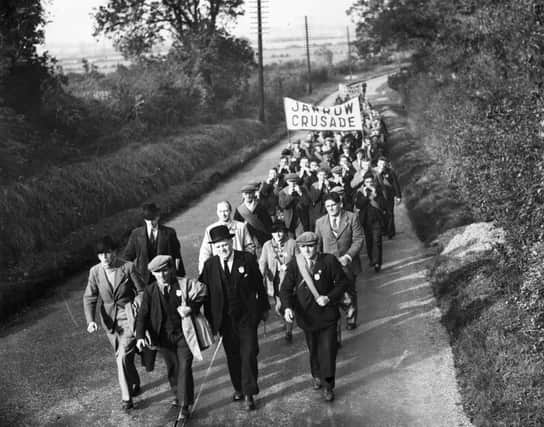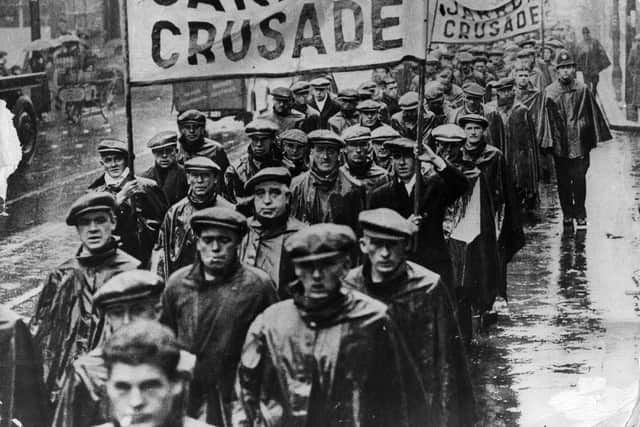Jarrow March: remembering the historic campaign and what it achieved for workers’ rights


The fight for workers’ rights and a fairer deal for the working classes has gone on for centuries and has taken many forms. Yet few sum up the desperation and commitment of workers than an event which took place in the heavily industrialised town of Jarrow in the north east of England.
A town in an area of the country which was a beating heart for the industrial revolution, Jarrow, like many other places reliant on industry, was devastated by the brutal economic downturn of the 1920s and 1930s. By 1936, the economic downturn had decimated the its shipyards, which had previously employed thousands of men, to just a fraction of this number.
Advertisement
Hide AdAdvertisement
Hide AdThe workers of the time were frustrated and wanted to have their plight heard in Westminster. On 5 October 1936, 200 of the unemployed men, led by David Riley (chair of Jarrow council) and the Labour MP for Jarrow Ellen Wilkinson, set off on a crusade to Downing Street to highlight the struggles of the town.
Armed with a petition signed by over 12,000 people in the local area, the group marched over 280 miles across 26 days to draw attention to the struggles of their town. Throughout the march, they gained support and signatures from people in the towns and villages they passed through.


They were well received in each of the areas they stopped in, and following each day of marching Wilkinson would give a public address. Ellen Wilkinson was there to deliver the petition, and made a plea to Prime Minister Stanley Baldwin, telling him of her town’s struggles.
She said: "During the last 15 years Jarrow has passed through a period of industrial depression without parallel in the town’s history. Its shipyard is closed. Its steelworks have been denied the right to reopen. Where formerly 8,000 people, many of them skilled workers, were employed, only 100 men are now employed on a temporary scheme.
Advertisement
Hide AdAdvertisement
Hide Ad“The town cannot be left derelict, and therefore your petitioners humbly pray that His Majesty’s Government and this honourable House should realise the urgent need that work should be provided for the town without further delay.”
An active response from the government was not soon in coming, but there was no denying that the march had given the struggles of industrial communities some much-needed attention.
Attention alone wouldn’t put food in the bellies of the people of Jarrow and other towns ravaged by years of economic decline. The reaction from Parliament was to have a short discussion about Jarrow’s plight, but by early November the men had made their way back to the North East dishevelled.
The marchers may not have felt it at the time, but the crusade had a symbolic meaning for the working classes. It showed that when united, working people could be strong enough to attract national attention and through the years, trade union movements grew stronger and stronger, as did the fight for better working rights.
Advertisement
Hide AdAdvertisement
Hide AdThe Jarrow Crusade failed to secure any real, immediate change for the town and the men who marched, but it did show that the working class movement could grow if people came together in unity and solidarity.
Comment Guidelines
National World encourages reader discussion on our stories. User feedback, insights and back-and-forth exchanges add a rich layer of context to reporting. Please review our Community Guidelines before commenting.
